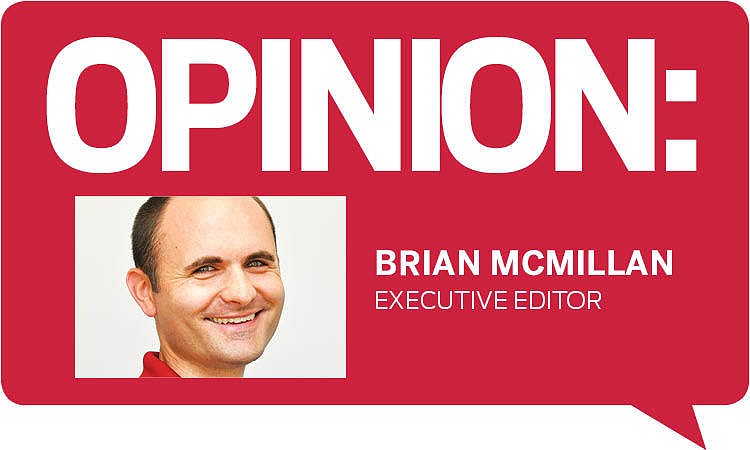- April 18, 2024
-
-
Loading

Loading

Before you judge me for allowing my daughter Kennedy to crawl around and eat the table scraps off the floor, allow me to explain.
Kennedy is now 10 months old, and she is officially off the formula-only diet. That’s a good thing because formula costs about $25 per canister.
Yes, you read that correctly: $25.
If you think that’s bad, try keeping a smile on your face when she drinks only one of the six ounces you’ve carefully shaken up in a special air-venting bottle.
“Do you think I should make four ounces this time?” I’ll ask my wife, Hailey, as I’m squinting with one eye, holding up the bottle to the light above the sink, trying to find the microscopic fill line.
“I don’t know!” she’ll say. “If you make four ounces, she’ll want six. If you make six, she’ll want four.”
Every time she eats a cheap Cheerio instead of a dehydrated yogurt puff, it’s money in the bank.
By the end of the day, our kitchen sink is a graveyard of half-drunk bottles of formula.
And so now, although she still drinks plenty of this powdered gold throughout the day and night, she can also eat supplement her diet with some kinds of solid food. Sounds less expensive, right?
Barely.
Her solid food, at least at first, consisted solely of “puffs.” Sitting there in her high chair, she is presented with six or seven puffs that, according to the packaging, are rich in essential baby nutrients. You can buy sweet-potato-inspired puffs, yogurt-inspired puffs. You can buy “Mum-Mums” that look like banana peels and come individually wrapped, just so the box looks more full. You can buy puffs in the shape of miniature wagon wheels. All of these varieties cost about the same: a few bucks for — get this — one ounce of “food.” It’s like buying astronaut food.
The problem is that Kennedy has just two teeth, and unfortunately, they’re both together on the bottom of her mouth. If she had one on top and one on the bottom, and if they lined up just right, she could probably eat all kinds of food. As it is now, she is mostly gumming her way to a full stomach, which is no small task.
Over the past week or two, though, she has expanded beyond the dollar-per-wagon-wheel diet and can now eat cheddar cheese, Cheerios (or, let’s be real, here: a store brand that resembles Cheerios), even bits of chicken. Every time she eats a cheap Cheerio instead of a dehydrated yogurt puff, it’s money in the bank.
And now that she has developed the intestinal fortitude required for solid food, the scraps on the dining room floor are no longer quite as dangerous. Really, they’re her own table scraps because every time you take her out of the high chair, all manner of puffs rain down to the floor because she only has about a 50% hand-to-mouth success rate. Fortunately, these days, a Cheerio is not a choking hazard anymore for our army-crawling baby: It’s a mid-afternoon snack.
I observed her scooting from Cheerio to Cheerio the other day and cheered her on. “Good girl!” I said. “Clean up that floor! No wonder some people have pet dogs!”
My 9-year-old son, Grant, looked at me in horror. “But Dad,” he said, “what if there’s an ant on it?”
“I don’t see any ants from here,” I said.
But the struggle is not over. Later that night, when Kennedy is still fussing after draining four ounces of formula in seconds flat, it’s the age-old question:
“Should I make two more ounces?” I ask wearily.
“If you don’t make it, she’ll keep fussing,” Hailey says, even more wearily. “But if you do, she won’t want it.”